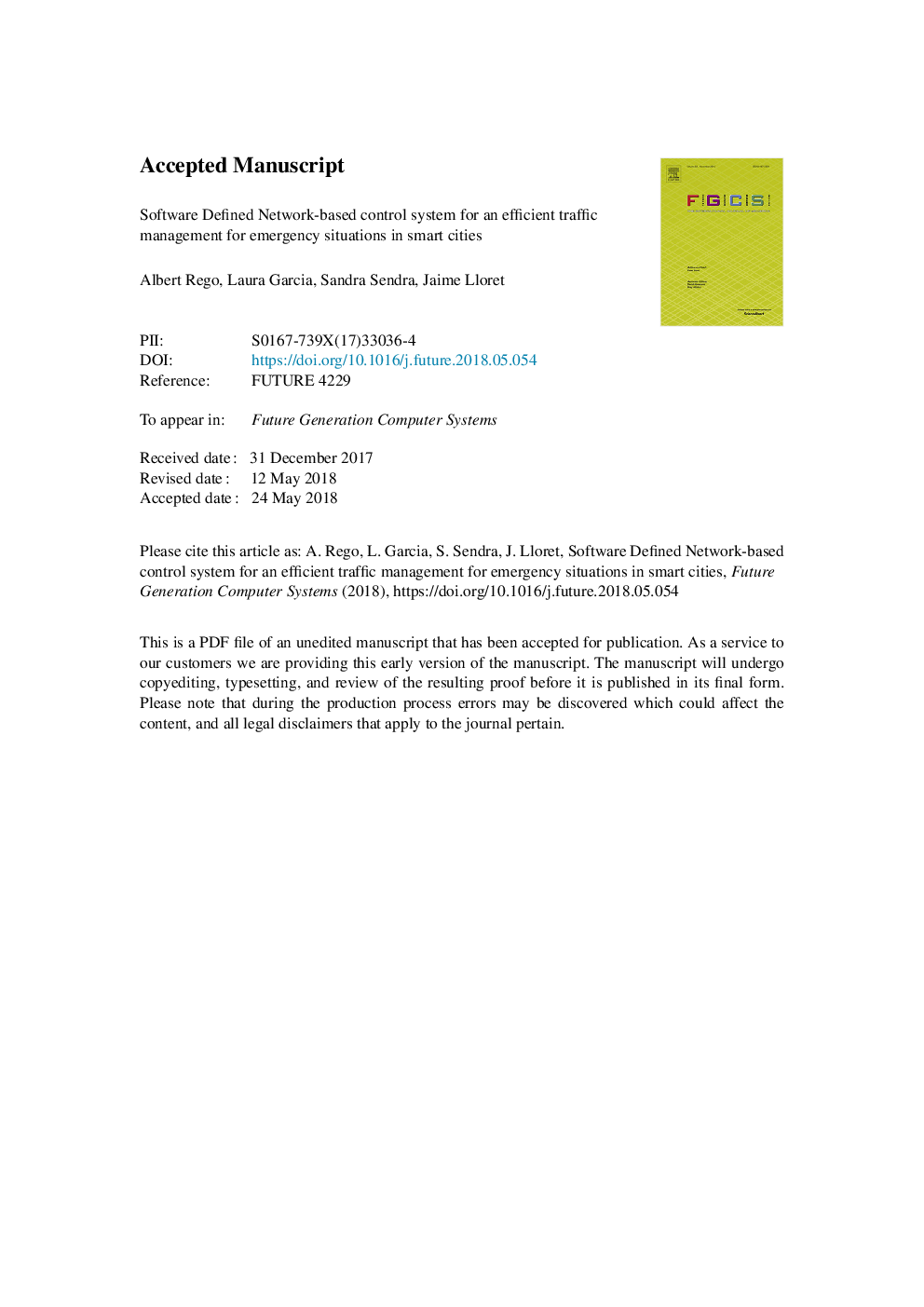| Article ID | Journal | Published Year | Pages | File Type |
|---|---|---|---|---|
| 6872851 | Future Generation Computer Systems | 2018 | 20 Pages |
Abstract
Smart cities provide new applications based on Internet of Things (IoT) technology. Moreover, Software Defined Networks (SDNs) offer the possibility of controlling the network based on applications requirements. One of the main problems that arise when an emergency happens is minimizing the delay time in emergency resource forwarding so as to reduce both human and material damages. In this paper, a new control system based on the integration of SDN and IoT in smart city environments is proposed. This control system actuates when an emergency happens and modifies dynamically the routes of normal and emergency urban traffic in order to reduce the time that the emergency resources need to get to the emergency area. The architecture is based on a set of IoT networks composed by traffic lights, traffic cameras and an algorithm. The algorithm controls the request of resources and the modification of routes in order to ease the movement of emergency service units. Afterwards, the proposal is tested by emulating a Smart City as a SDN-utilizing Mininet. The experiments show that the delay of the emergency traffic improves in a 33% when the algorithm is running. Moreover, the energy consumed by the IoT nodes is modeled and the obtained results display that it increases linearly with the number of nodes, therefore, the proposal is scalable.
Keywords
Related Topics
Physical Sciences and Engineering
Computer Science
Computational Theory and Mathematics
Authors
Albert Rego, Laura Garcia, Sandra Sendra, Jaime Lloret,
